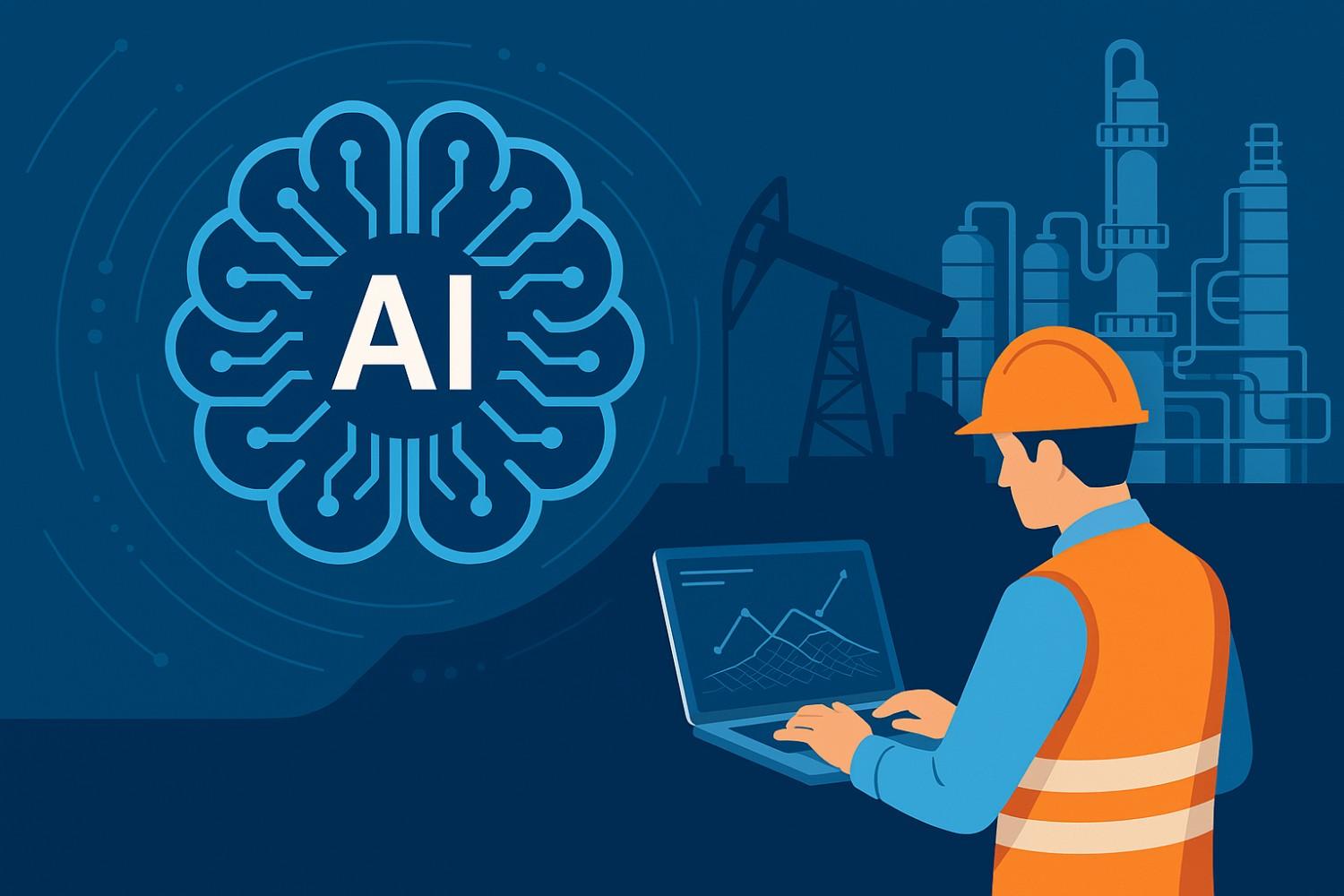The manufacturing world is undergoing a significant transformation, moving beyond traditional automation to adopt intelligent, data-driven technologies. At the heart of this evolution is Edge AI, a cutting-edge innovation that allows factories to make real-time decisions right on the shop floor. It’s no longer just about machines performing tasks; it’s about intelligent systems that sense, think, and act instantly, without waiting on cloud-based processing. This transformation, led by pioneers like Ingenero, is turning factories into responsive, agile, and efficient environments that adapt and optimize continuously.
What Is Artificial Intelligence at the Edge?
To understand Edge AI, picture a traditional factory setup. Machines and sensors generate massive volumes of data, which is typically sent to the cloud for processing. While this cloud AI model offers immense computing power and storage, it also introduces latency, consumes bandwidth, and may pose data security risks, especially for proprietary or sensitive operational data.
Edge AI changes the game by shifting AI processing directly onto local devices such as sensors, cameras, programmable logic controllers (PLCs), and industrial robots. These “edge devices” are installed on the factory floor and equipped with AI models to analyze data where it is generated, right at the source. This local processing drastically reduces response time and bandwidth use, while improving privacy and resilience.
The key difference between cloud AI and edge AI is that while cloud AI excels at training models using large datasets, edge AI excels at inference, processing and acting on data instantly at the point of action.
Benefits of Edge AI in Manufacturing
Edge AI delivers several tangible benefits that are reshaping the manufacturing industry. According to Fortune Business Insights (2024), the global Edge AI market was valued at USD 20.45 billion in 2023 and is projected to grow to USD 269.82 billion by 2032, with a CAGR of 33.3%, underscoring rapid adoption.
1. Real-Time Decision Making
Edge AI allows instantaneous responses by analyzing data in milliseconds. This is critical for tasks such as defect detection or adjusting machine parameters. Edge AI-based quality control systems have identified defects 200% faster than traditional systems, leading to improved throughput and reduced waste.
2. Reduced Latency
By eliminating the need for data to travel back and forth from the cloud, Edge AI significantly reduces latency. Edge AI cuts processing latency by 30–50 milliseconds, a crucial improvement for time-sensitive applications like robotic automation and synchronized production lines.
3. Lower Bandwidth Usage and Costs
Edge AI minimizes data transmission by processing data locally. Only essential information is sent to the cloud, leading to 45% lower cloud storage costs and 32% reduced IT infrastructure costs over three years (Deloitte, 2023).
4. Enhanced Data Security
Keeping data onsite significantly enhances privacy and compliance, especially for intellectual property or processes governed by regulations like GDPR. Security incidents were detected and resolved 72% faster in edge-enabled environments.
5. Improved Reliability
Even during network interruptions, Edge AI continues functioning. This is vital for remote or high-dependency facilities, ensuring uninterrupted production and business continuity.
6. Optimized Resource Usage
With real-time visibility into energy and machine usage, manufacturers can optimize operations. Edge AI-driven systems reduced energy consumption by 20–30%, and a 40% drop in preventive maintenance costs.
How Edge AI Is Powering Smart Manufacturing
Edge AI is the core enabler of Industry 4.0 and is powering innovations across manufacturing plants. An impressive number of manufacturers have already implemented AI solutions, significantly enhancing productivity and quality.
Predictive Maintenance
Edge devices like sensors placed on machines continuously collect data such as vibrations, temperature, and noise. Using this information, Edge AI can detect unusual patterns that signal potential equipment failure. This allows maintenance teams to take action before a breakdown happens, helping to reduce unexpected downtime and extend the life of the machines.
Real-Time Quality Control
Edge AI systems equipped with high-speed cameras can inspect products as they move through the production line. These systems identify defects, missing components, or deviations from quality standards immediately. By catching issues early, manufacturers can ensure better product quality and reduce waste or rework.
Process Optimization
Edge AI analyzes production data in real time to spot inefficiencies or slowdowns. It can automatically adjust machine settings or workflows to improve speed, reduce delays, and maximize output. This helps in making operations smoother and more productive.
Worker Safety
Edge AI also plays a critical role in maintaining a safe working environment. Through real-time video monitoring and smart analytics, it can detect safety violations, identify hazardous situations, and send alerts instantly. It ensures workers follow safety protocols and helps prevent accidents on the shop floor.
Autonomous Operations
As Edge AI technology matures, machines are becoming smarter and more capable of working independently. These systems can adapt to changes in production demands, reconfigure themselves, and continue operating efficiently without human intervention. This brings flexibility and resilience to manufacturing processes.
Technologies Enabling Edge AI in Manufacturing
The implementation of Edge AI in factories is possible due to a combination of several advanced technologies:
1. Powerful Edge Devices
Modern processors and specialized chips allow AI models to run directly on devices at the factory site. These devices are fast, compact, and energy-efficient, making real-time processing possible.
2. IoT Sensors
A wide network of connected sensors gathers detailed data from machines, equipment, and the environment. This data serves as the foundation for AI systems to analyze and make informed decisions.
3. 5G Connectivity
Faster and more reliable network connections enable smooth communication between machines and systems. 5G helps ensure that data is shared quickly and efficiently, supporting seamless operations.
4. Lightweight Machine Learning Models
AI models used at the edge are designed to be efficient and lightweight. They are trained on larger systems and then deployed on edge devices to perform tasks like monitoring, decision-making, and control.
5. Cloud-Edge Integration Platforms
These platforms help manage all connected devices and AI models across a factory. They ensure that updates, data sharing, and performance monitoring happen smoothly between local systems and cloud infrastructure.
Suggested Read: Achieving Sustainability in Power Plants with AI and Big Data
Challenges in Adopting Edge AI
While Edge AI offers numerous benefits, manufacturers may encounter some challenges when trying to implement it:
- High Initial Investment
Setting up Edge AI systems involves the cost of buying specialized hardware, software, and integrating it with existing operations. This can be a significant upfront expense for some companies.
- Integration Complexity
Many factories use a mix of old and new machines that operate on different systems. Connecting these machines to modern AI-based solutions can be complex and time-consuming.
- Skilled Workforce Shortage
Using and maintaining Edge AI requires skills in areas like AI, machine learning, automation, and cybersecurity. Many companies may need to invest in training their staff or hiring new experts to fill this gap.
4. Data Management
Even though data is processed locally, managing its flow across edge and cloud, ensuring quality, and enforcing governance across systems requires robust strategies and tools.
5. Security Concerns
Each edge device becomes a potential cyber threat entry point. Securing these endpoints, ensuring model integrity, and preventing unauthorized access calls for comprehensive security frameworks.
To navigate these challenges, Ingenero, a leader in Applied AI and Digital Solutions, offers end-to-end support from pilot projects to full-scale implementation enabling manufacturers to embrace Edge AI confidently and effectively.
The Future of Edge AI in Manufacturing
The future of manufacturing will be driven by intelligent, autonomous, and sustainable operations, with Edge AI at the centre. As devices become more powerful and models more compact, expect even smarter operations.
1. Hyper-Personalization
Factories will create highly customized products on a large scale, adapting to consumer preferences instantly, resulting in real-time mass customization.
2. Self-Healing Factories
Machines will not only predict breakdowns but also initiate self-repair or reroute tasks, reducing the need for human intervention and ensuring uptime.
3. Human-Machine Collaboration
Cobots, powered by Edge AI, will work intuitively and safely alongside human workers, boosting productivity and enhancing workplace safety.
4. Sustainable Manufacturing
Edge AI will help factories optimize energy and raw material usage, reducing carbon emissions and helping meet sustainability targets.
Conclusion
Edge AI is revolutionizing manufacturing by bringing intelligence closer to the action. By enabling real-time insights, reducing costs, enhancing data security, and improving resilience, it is laying the foundation for the next generation of smart factories. While adoption poses challenges, strategic investment and the right partners make all the difference. Ingenero, with its deep expertise in Applied AI, Industrial Automation, and Digital Solutions, is ideally positioned to help manufacturers unlock the true potential of Edge AI building smarter, safer, and more efficient operations.
FAQs
How does Edge AI improve manufacturing efficiency?
By processing data locally, Edge AI enables real-time actions such as predictive maintenance and instant defect detection, reducing downtime and waste while improving output quality.
What are examples of Edge AI in factories?
Edge AI is used in real-time defect detection, predictive maintenance with smart sensors, autonomous robotic control, and safety monitoring through AI-enabled surveillance.
What’s the difference between cloud AI and edge AI?
Cloud AI handles model training using massive datasets. Edge AI handles real-time decision-making on local devices with low latency and minimal dependence on connectivity.
Is Edge AI scalable across manufacturing sites?
Yes. With cloud-based management, Edge AI models can be deployed and updated across multiple factory sites, ensuring consistency and adaptability at scale.
What is edge computing for AI?
It refers to running AI models directly on local devices near the data source, enabling fast processing, improved privacy, and minimal reliance on internet connectivity.



